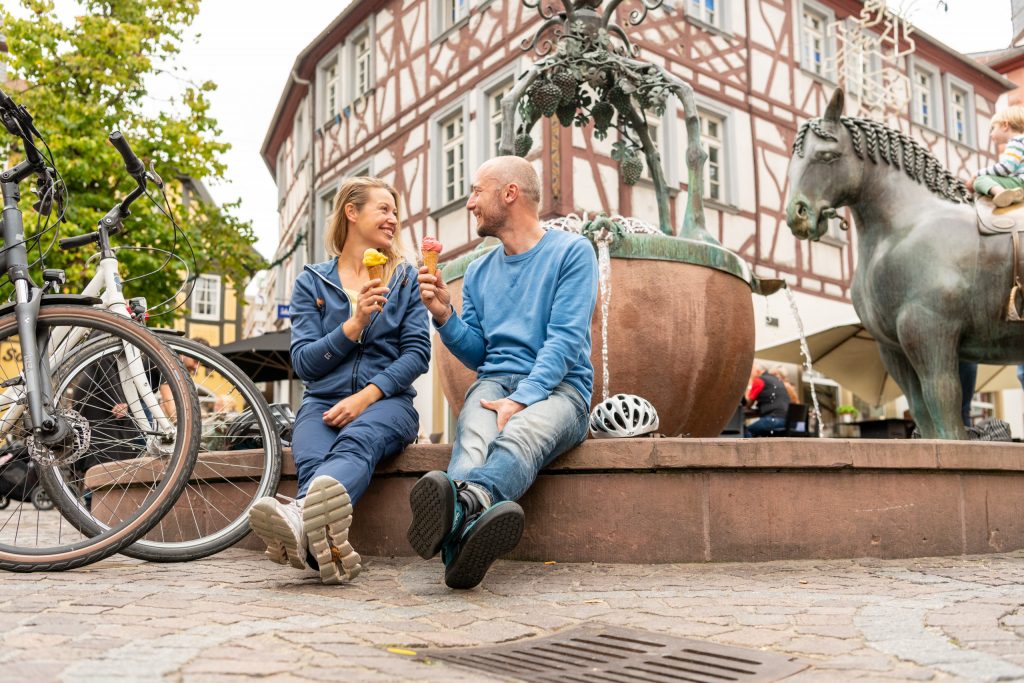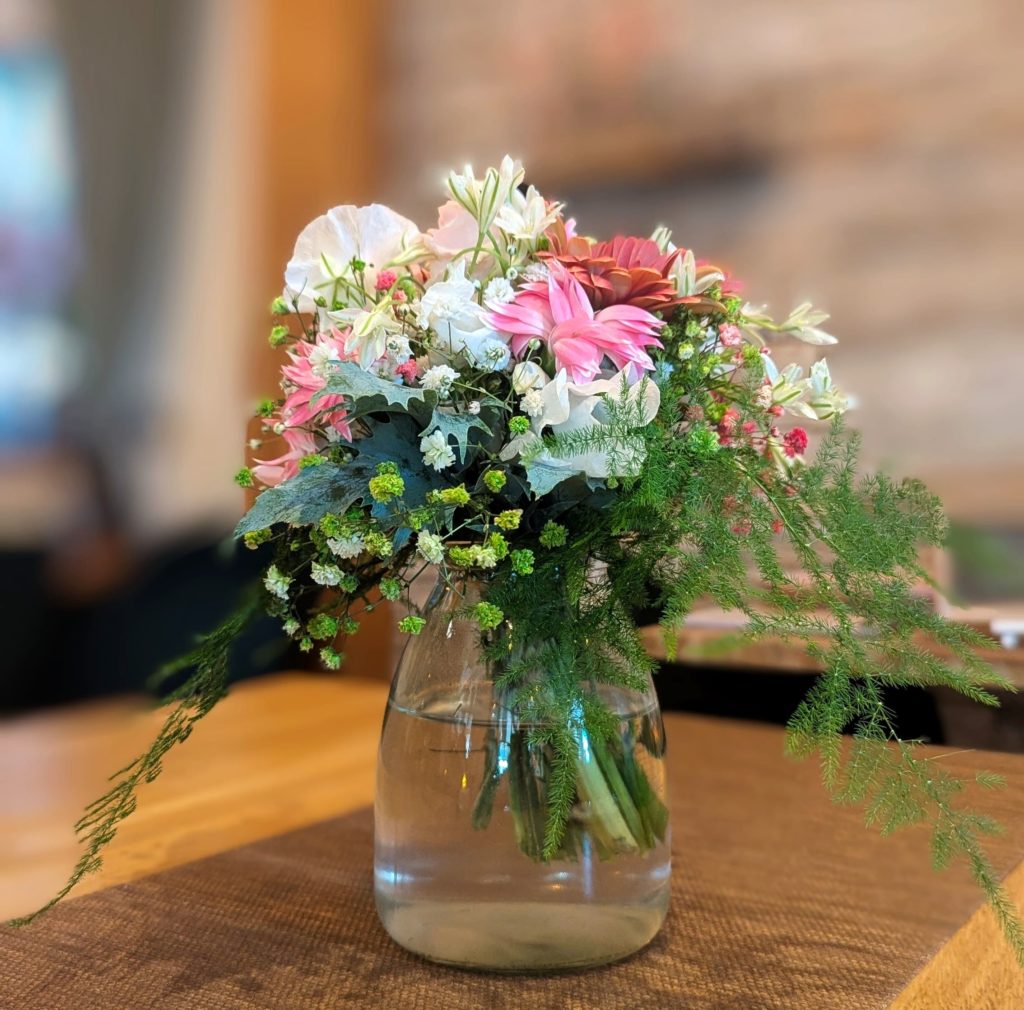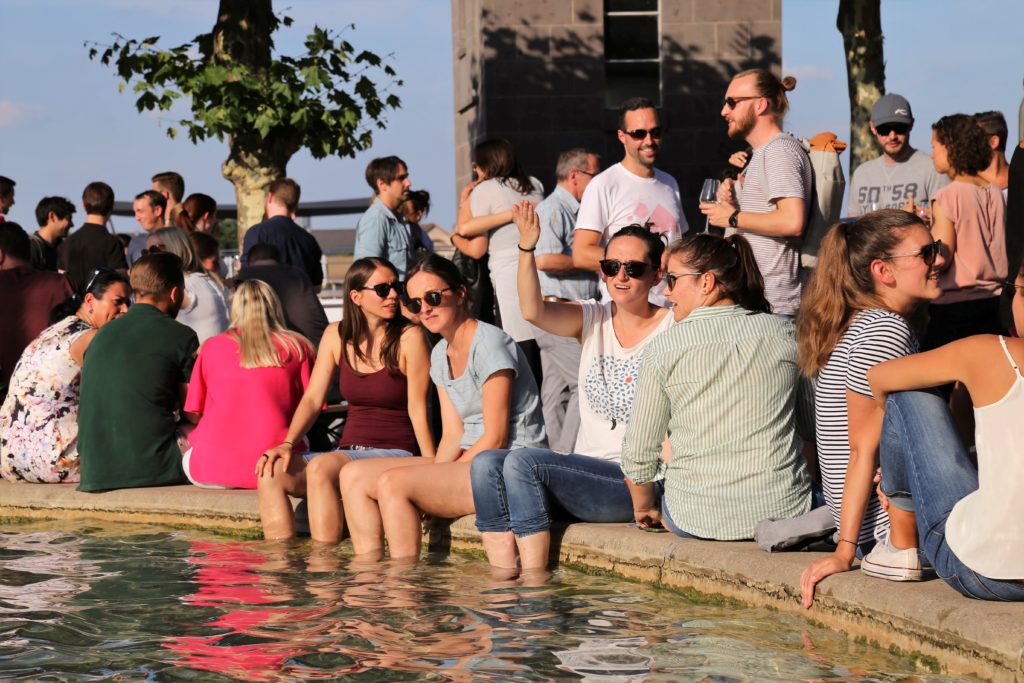Rheinhessen and wine are, of course, inseparably linked. For the new Rheinhessen blog, I searched for gourmet manufactories away from vintners and wineries and came across three real insider tips. Find out here how the production of honey, syrup and tableware can nevertheless be inspired by wine.
Woi Honey, Ingelheim (Martina & Sandra Woidich)
On the subject of Rheinhessen manufactories and specialties, I immediately had to think of my student friend Martina and her wife Sandra. The two, in addition to working in the winery of Martina's family, have been producing their own honey since 2018 under the brand "Woi Honey"here. So: thought, said, done and a few text messages later I'm standing in the courtyard of the Ingelheim winery. Here the reading preparations are in full swing and the two invite me immediately in the bee garden behind the house. There, the industrious workers are making the most of the last rays of summer sunshine. Hundreds of them are flying around the six so-called wooden hives, each of which houses a colony. Everything looks lively and busy above the flowering meadow. "But we shouldn't go any closer now - the bees defend their territory, especially when there is less food!" warns Martina. In search of food, the bees fly up to two kilometers, and even further when hunger becomes stronger. With 50,000 bees per colony, this adds up to quite a distance - and quite a bit of honey, too! Sandra explains that a colony produces between 20 and 30 kg of honey per year, depending on the vintage.
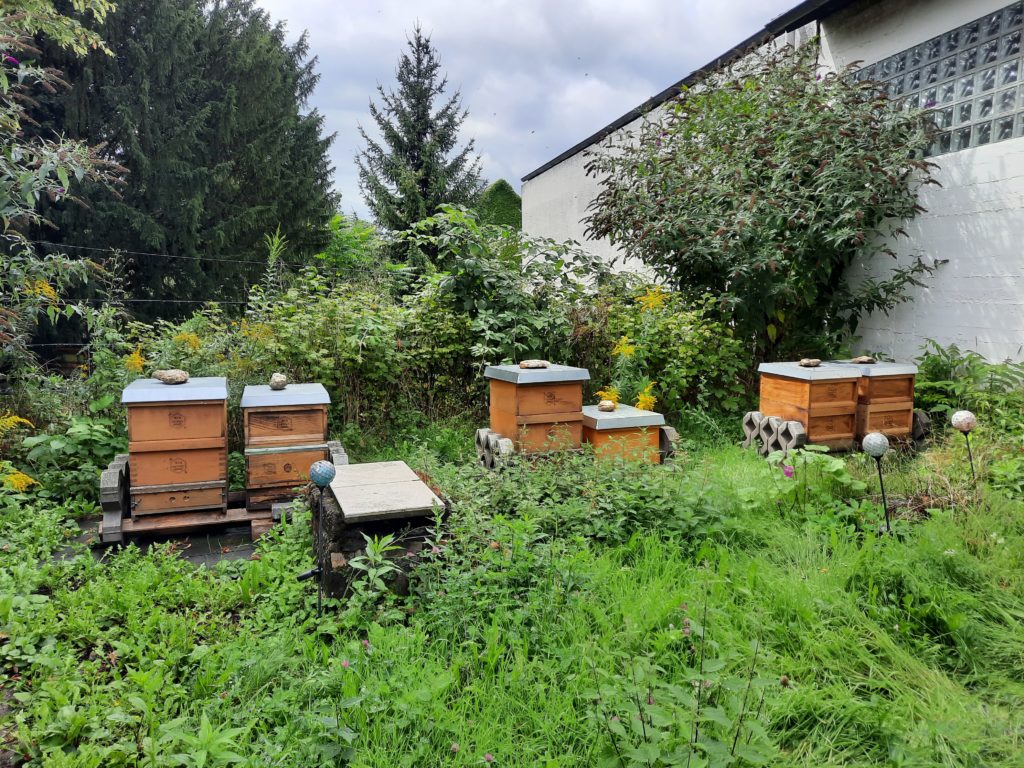
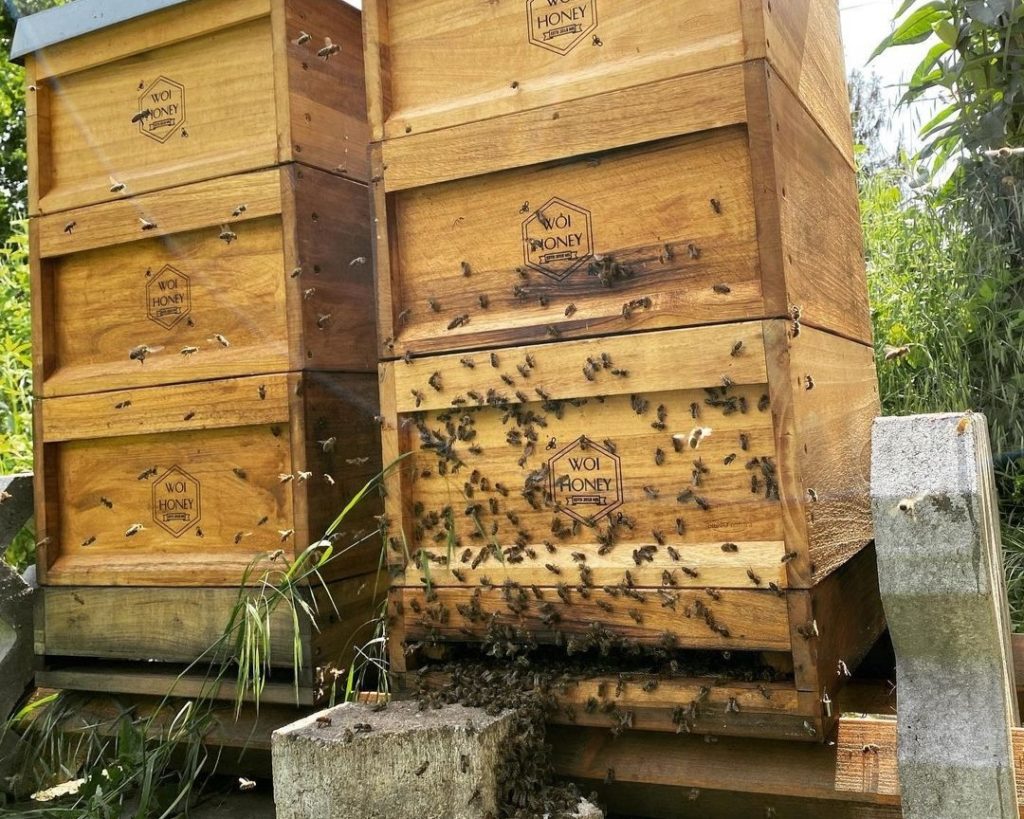
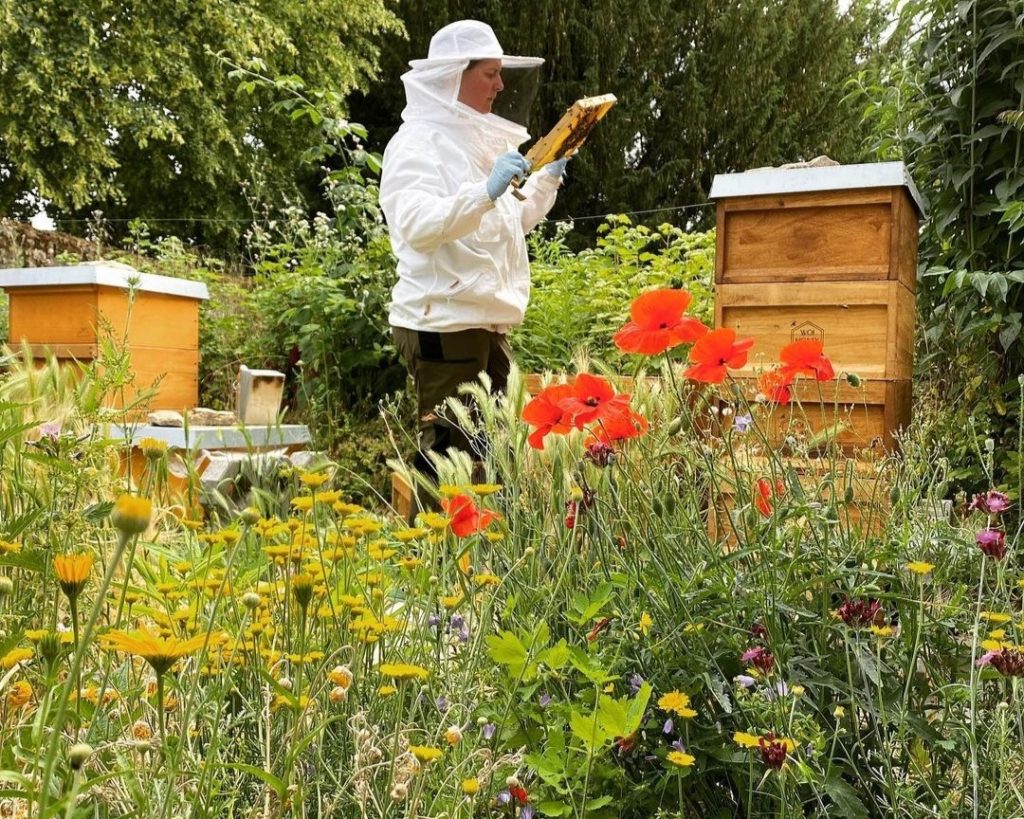
Piece by piece we go through many aspects of beekeeping and honey production, I am impressed by the expertise of the hobby beekeepers. But between these many facts, I also want to know how Martina and Sandra got their bees in the first place. "That was in 2018," Martina recalls, "during that time we had a lot of crazy ideas." This time of change for the couple began with leaving behind their jobs in the chemical industry and joining Martina's family's winery. With self-employment, their whole lives changed - they needed a new hobby to balance things out! They quickly found out that Ingelheim had a beekeepers' association that also offered courses. However, the places were very popular, Sandra says: "Martina got a place after a year on the waiting list, and I got one the next year." The wait was worth it; the two are very happy with the support they receive from the association. And despite the effort, the balancing effect of the hobby is not neglected. Sandra explains, "The bees sense when you're hectic and then reflect that mood. So you have to slow down if you want to work with the animals." And there is plenty of work to do, because letting nature take its course only works to a very limited extent with honey bees, not to be confused with wild bees. They have to be fed, mites have to be driven away, and rejected queens have to be given a new home. For this, the Ingelheimers have a whole garage full of utensils. "You start off so cluelessly and get from the hundredth to the thousandth. Of course, no one tells you that beforehand," Martina laughs as she opens the garage door. For the time being, the six colonies they are currently looking after will be the only ones they have.
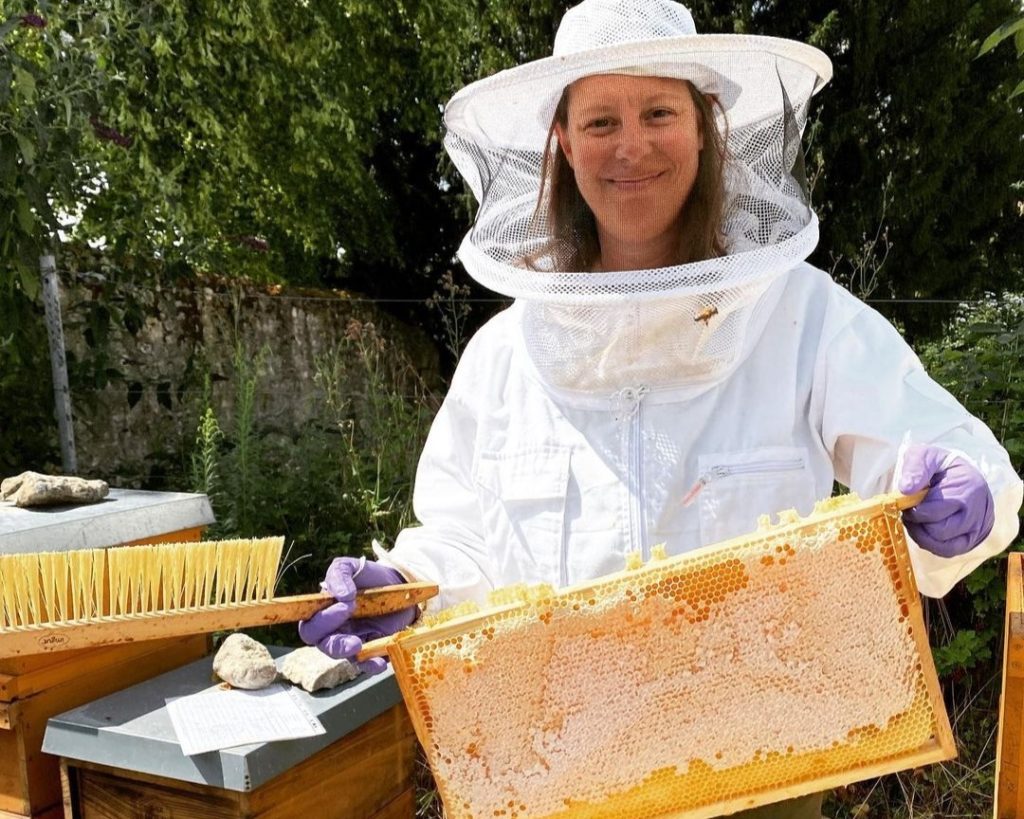
The approximately 300,000 bees provide the raw material for two harvests a year: the spring and the summer harvest, both of which I am now allowed to taste. The spring harvest comes mainly from the rapeseed blossoms that grow around the winery at this time. It is therefore very bright and was stirred creamy, tastes very sweet and uncomplicated. The summer crop is somewhat different: A large part of this is forest honey, and in addition, the Sommertracht is liquid and translucent amber in color. The taste is more complex and tangier, you can taste the spicy forest aromas right away. In addition to the two honeys, Sandra and Martina offer lip balm made from their own beeswax, have made their own wax cloths for the home and, of course, there is also a honey wine.
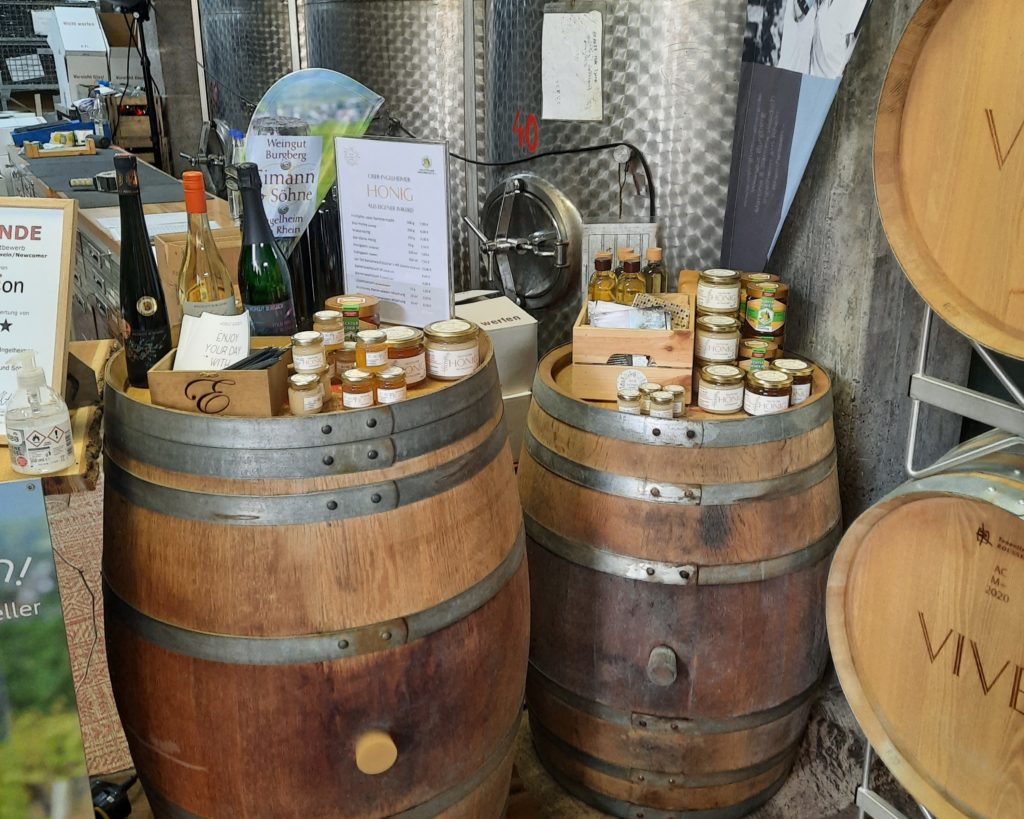
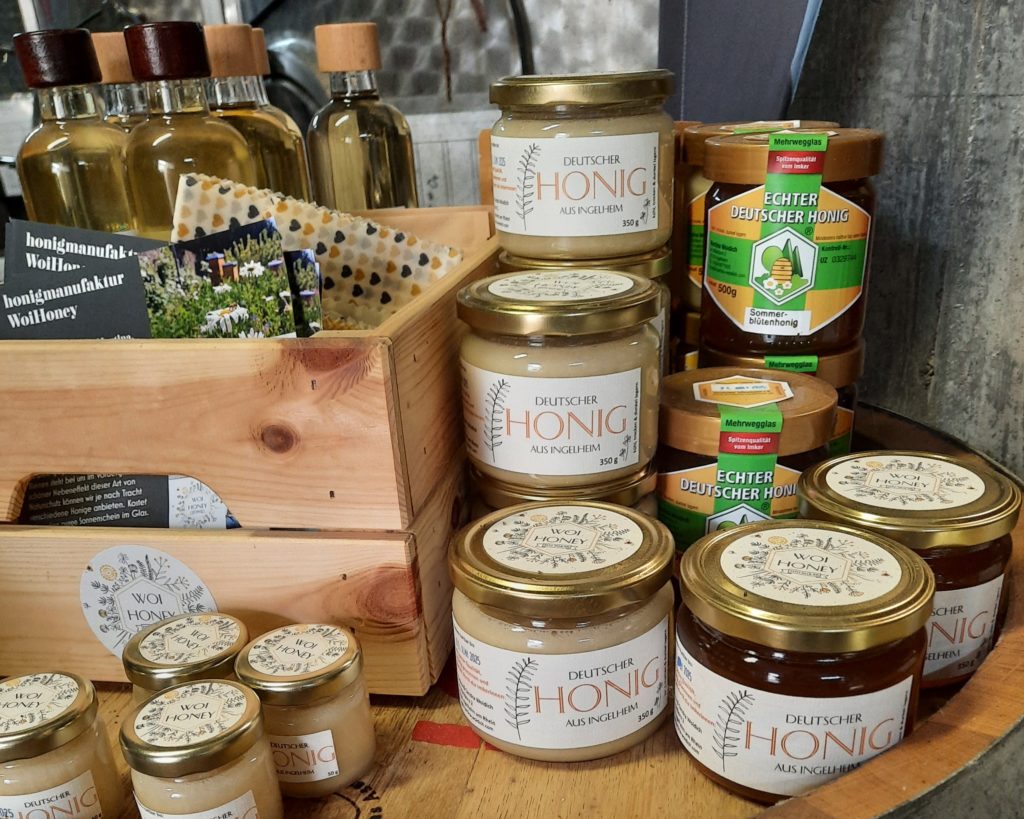
Even if at the beginning the contribution to environmental protection by keeping the bees was important to them, the hobby beekeepers are now very proud of their own products and the work behind them. All products can be purchased online at https://woihoney.jimdosite.com/ ordered and picked up on site.
The Ankelei, Mainz-Ebersheim (Anke Eckhardt)
The next stop on my manufactory journey takes me to Mainz-Ebersheim to Anke Eckhardt and her "Ankelei". We take a seat on the small terrace overlooking the herb garden and are also immediately greeted by the large, black house cat - "The fat one", as Anke introduces him to me. She herself is actually a teacher at an elementary school, but she compensates for this elsewhere: she regularly helps out in the winery of a winemaker friend and produces syrups and spiced salts under the brand name "Die Ankelei".
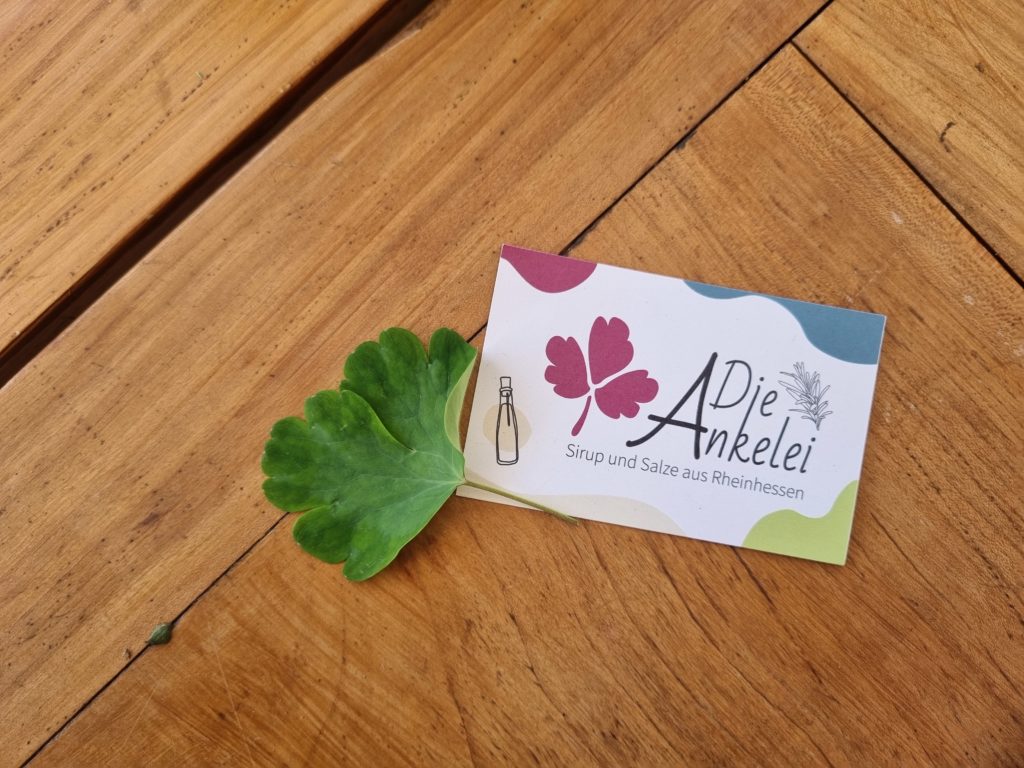
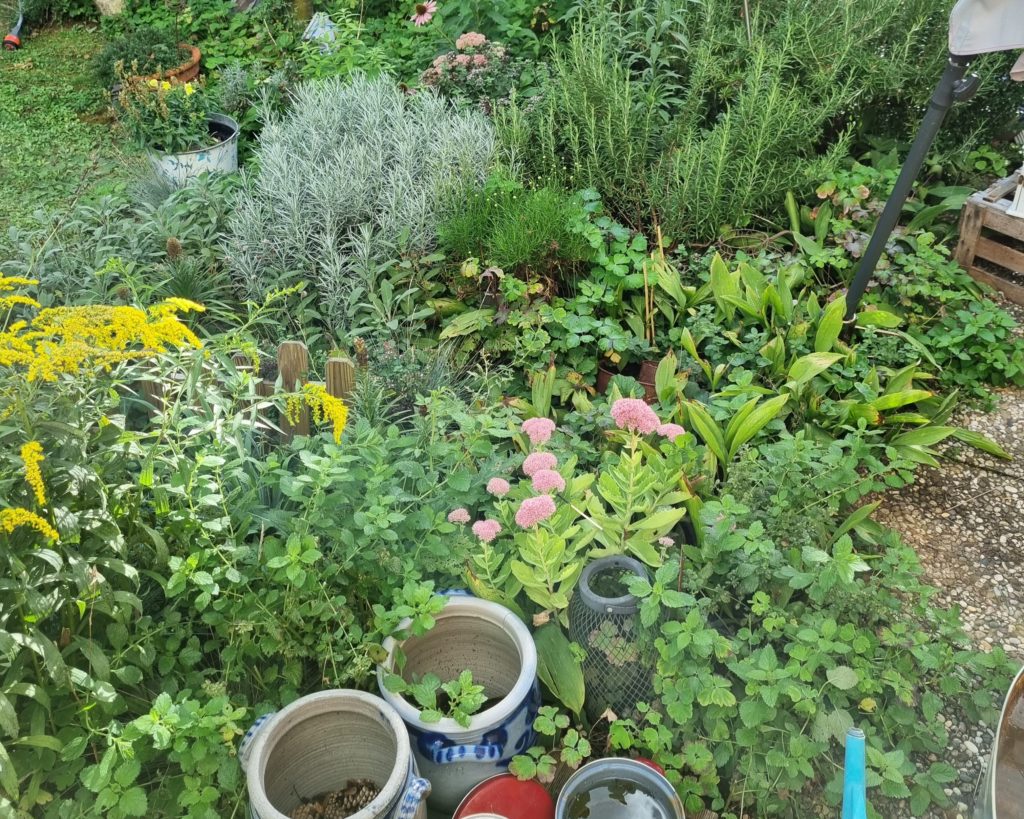
"Pouring wine is so delightfully uneducational. You have money, I have wine, let's swap. And if you can then strike up a nice conversation and successfully advise the guests, my day is definitely saved," she enthuses. The work at the winery and the construction of the Ankelei are closely linked: Anke made one of her first syrups from the blossoms of the large elderberry bush in the winery. With the lavender blossoms saved from the organic waste garbage can, she then faced her first challenge: What to do with so much lavender? Again, she tried her hand at a syrup - successfully. The homemade lavender lemonade is on the table, I may try. Fresh, fruity and a bit herbaceous-tart - there's no better way to enjoy the last rays of sunshine.
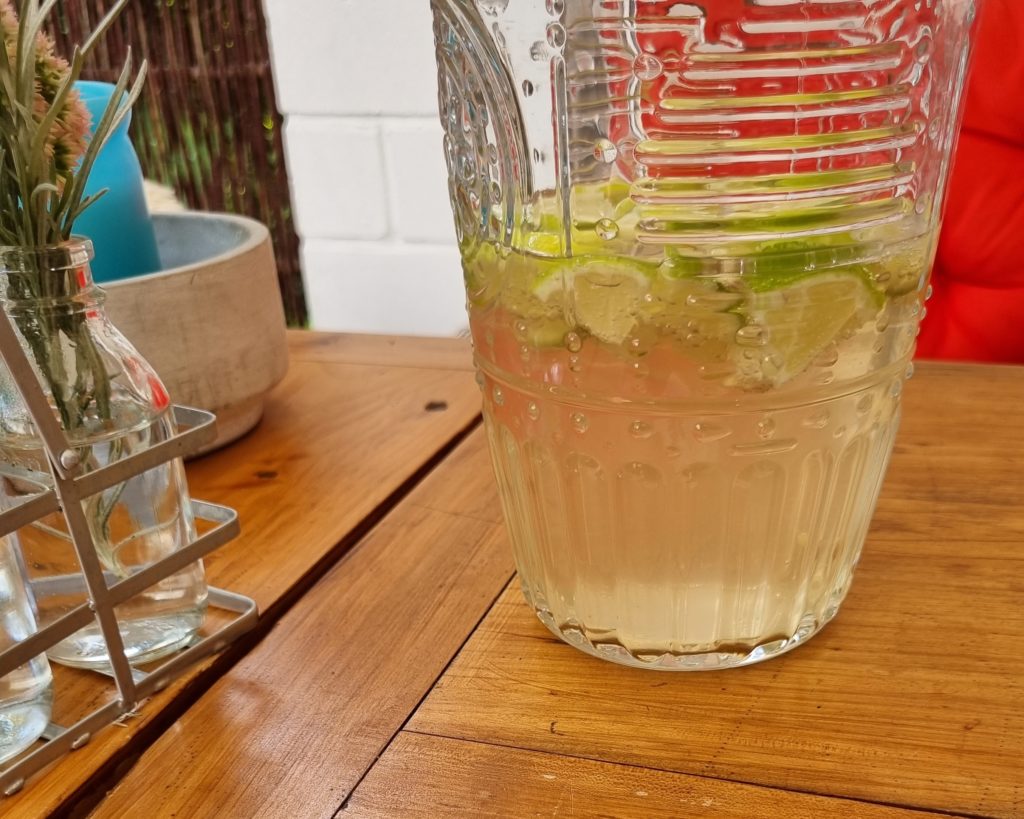
During the Corona pandemic, the main thing was to fill a lot of time, syrup production expanded almost by itself and was expanded to include the production of herbal salts. Finally, the columbine (by the way, a derivation of the name of Anke's favorite plant, the columbine) was highly officially promoted to the second mainstay of the Rheinhessin. In the meantime, there are eight different types of syrup and six herbal salts, the ideas sometimes coming about through demand, sometimes inspired by the diverse flora of Rheinhessen. The artisanal production is always recognizable in the products. Anke takes a bottle of rosemary syrup and holds it up to the sun. "My syrups often contain slight cloudiness or some sediment. That's because I don't use industrial filters," she explains. Shaken up briefly, the haze is also gone. The bestseller from the Ankelei is the mulled wine syrup. The uses are many, as Anke explains: In Secco it tastes as an aperitif, in desserts as a Christmas zing or quite classically in hot red wine, for the delicious mulled wine at home. Anke is often asked by her customers for preparation tips. Her recommendation: Try it out and let your imagination run wild!
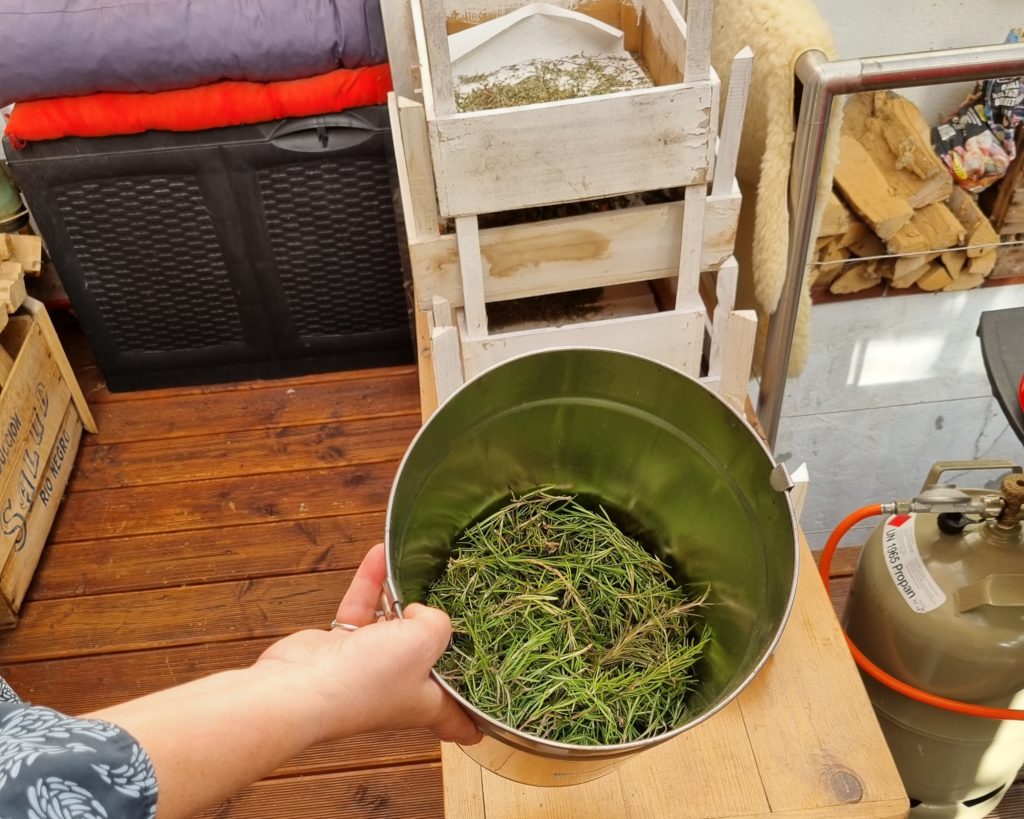
The ingredients for the products come in part from Anke's own herb garden, through which she now leads me. There is a bed with all kinds of kitchen herbs, raised beds with lemongrass and verbena, tubs with lavender, marigolds and thyme. "Sometimes I don't even mow the lawn because there's so much to find even here." A real herb paradise, and in between again and again: the columbine, which also serves as a logo. The other part of the herbs comes from other gardens in Rheinhessen, where Anke saves overgrown greenery from the organic waste garbage can. The garden owners who respond to her calls are grateful for the bulk buyer and always receive a jar of herbal salt as a thank-you gift.
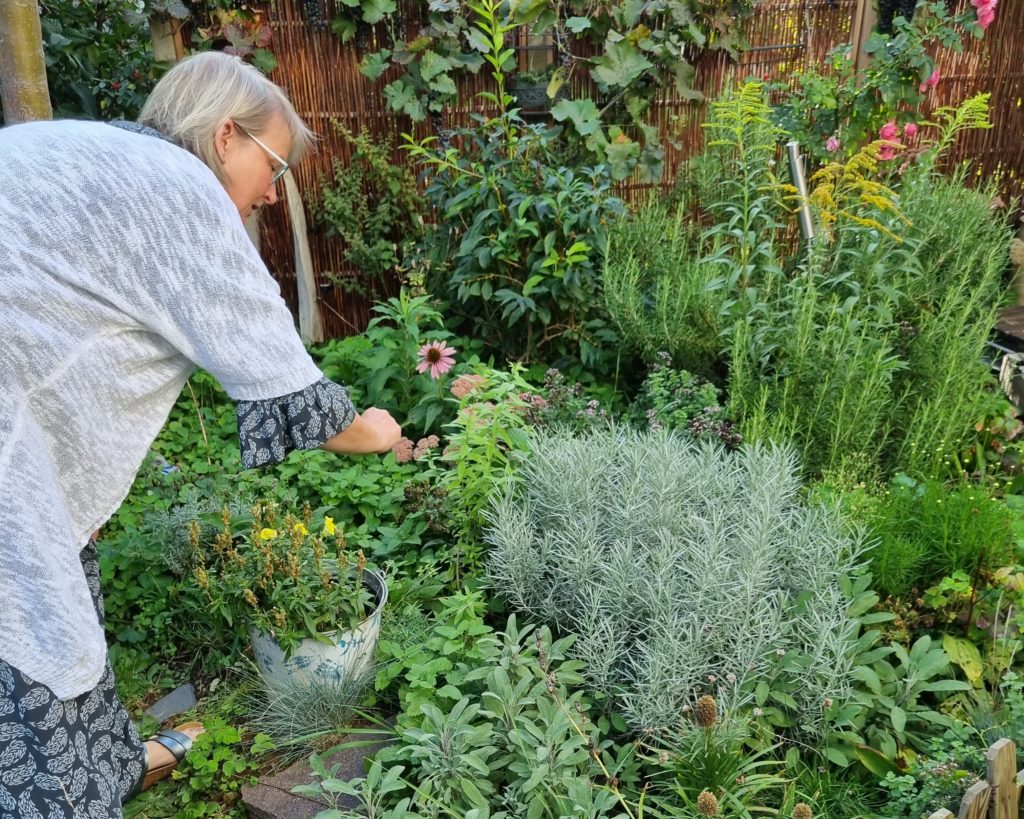
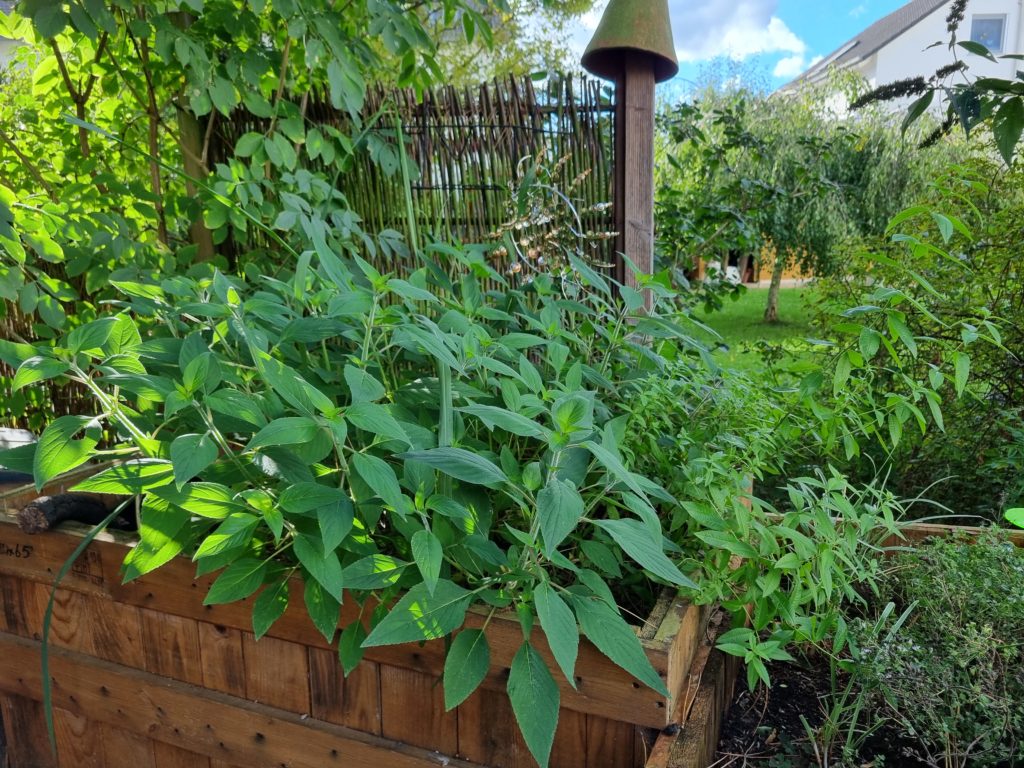
You can buy the syrups and salts in various farm stores, in wine stores and at weekly and Christmas markets. But what Anke always emphasizes is that the Ankelei should be a pleasure, from cultivation to processing to the finished product in the jar or on the plate. Regional raw materials, sustainability and also a piece of independence and self-sufficiency are to be celebrated. Anke does not want to become rich with her Ankelei.
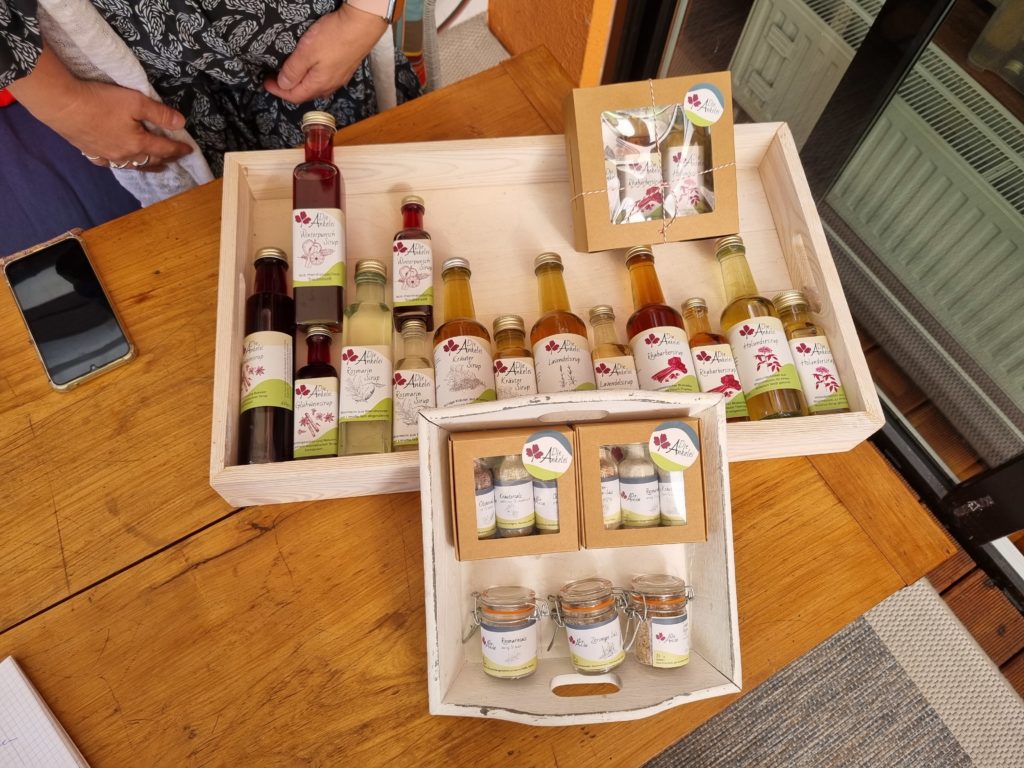
All products can be ordered by mail at ankelei@web.de can be ordered. In addition, the Vinothek am Winzerkeller in Ingelheim, the "s'Fachl" in Mainz, the Kartoffelmanufaktur Klein in Mainz Ebersheim and the Weinhof Schmitz in Ebersheim offer syrups and salts from the Ankelei.
Dialect Gescherr, Dalheim (Anke Faust)
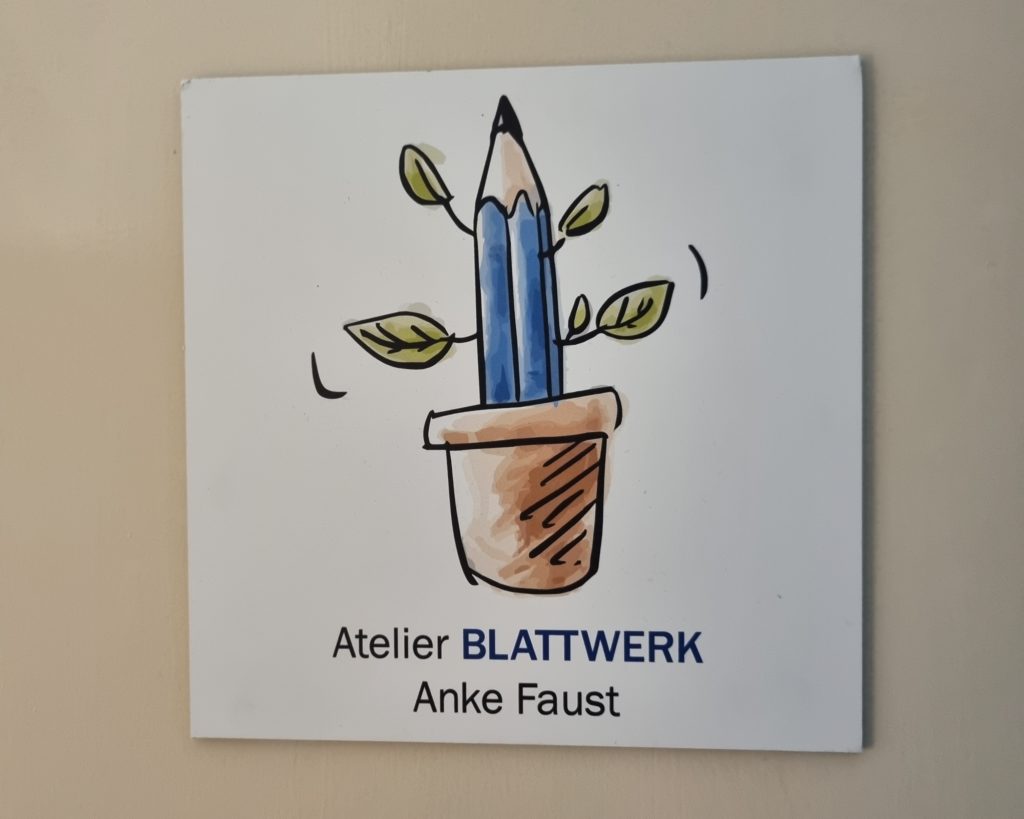
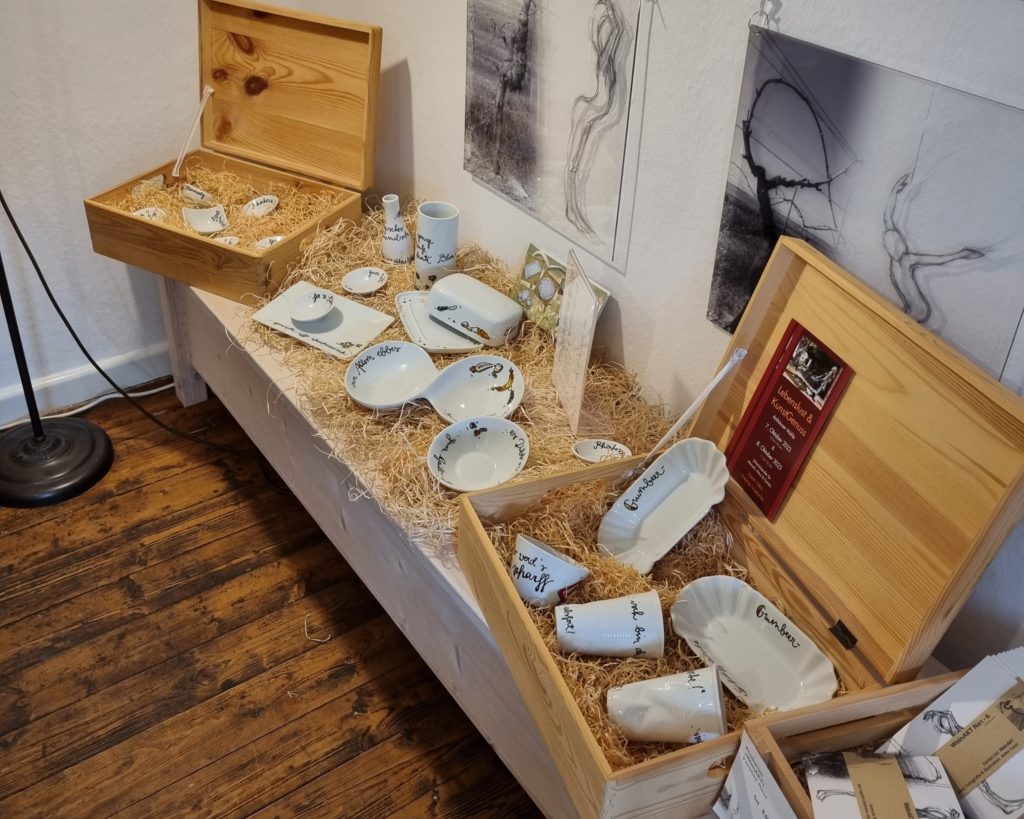
In keeping with the theme of enjoyment, I recently came across Anke Faust and her studio Blattwerk, where all sorts of so-called "Dialect-Gescherr" is created. Anke Faust is a studied illustrator and usually works on illustrations for children's books. The best-known work with her drawings: "Ein Schaf fürs Leben" ("A Sheep for Life"). She shows me a copy of the book and says, beaming: "We won the German Youth Literature Prize with it back then. That's something like the Oscar for children's books." You immediately notice how much joie de vivre there is in her work, regardless of the field. But as a native of North Rhine-Westphalia, how did she come to write "rhoihessische Mundart-Gescherr"? The answer, as so often: one thing led to another. Anke Faust came to Mainz for her studies and stayed in Rheinhessen, first for many years in Nieder-Olm, then in a small town between Alzey and Worms. Already known for her work, she was finally offered to fill a booth within the Trullo walk Flörsheim-Dalsheim with life. Since she wanted to present not only art prints, postcards and drawings, the question quickly arose: Why should one limit oneself as an artist only to paper? The hour of birth of the dialect dishes had struck! Inspired by the winegrowers of the region and the local delicacies and specialties, Anke Faust decorated the first plates, bowls and cups with sayings in the Rhine-Hessian dialect and matching pictures. The idea: Everything you need for the culinary part of a wine tasting should find a place on the tableware. The attention was not long in coming: On the very day of the trullo hike, a local newspaper informed itself about the project, SWR television paid a visit to the studio, and finally, in 2018, the tableware even made it to an exhibition at the Landesmuseum.
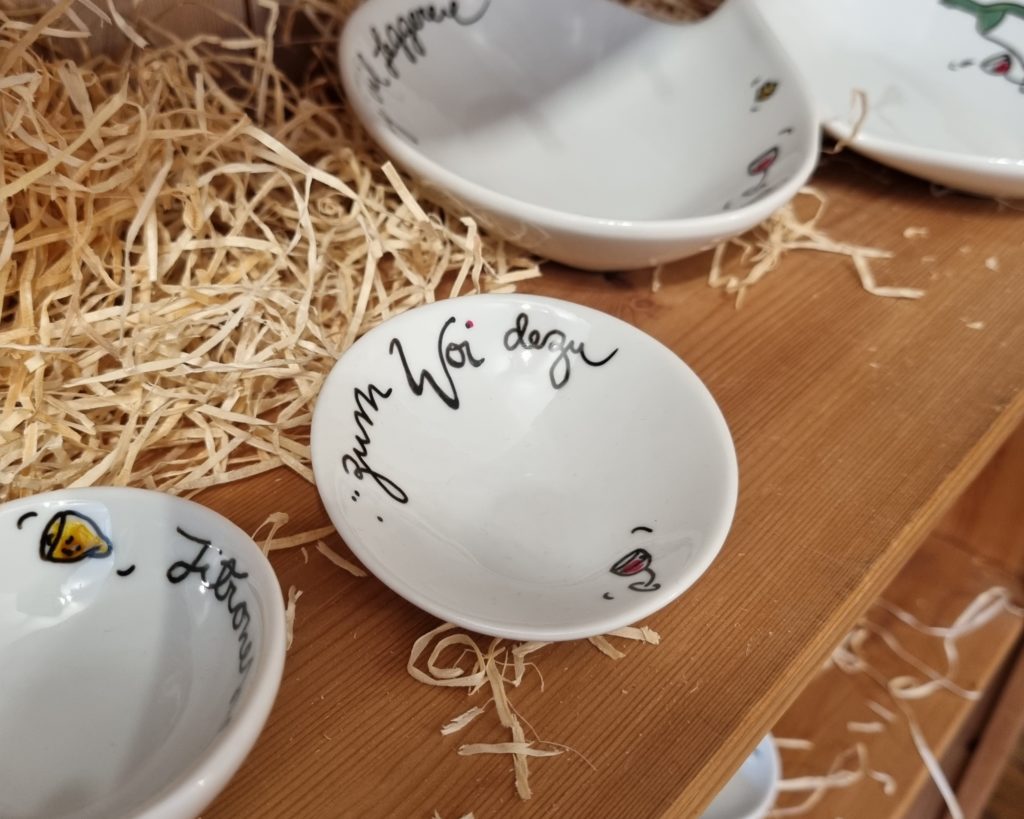
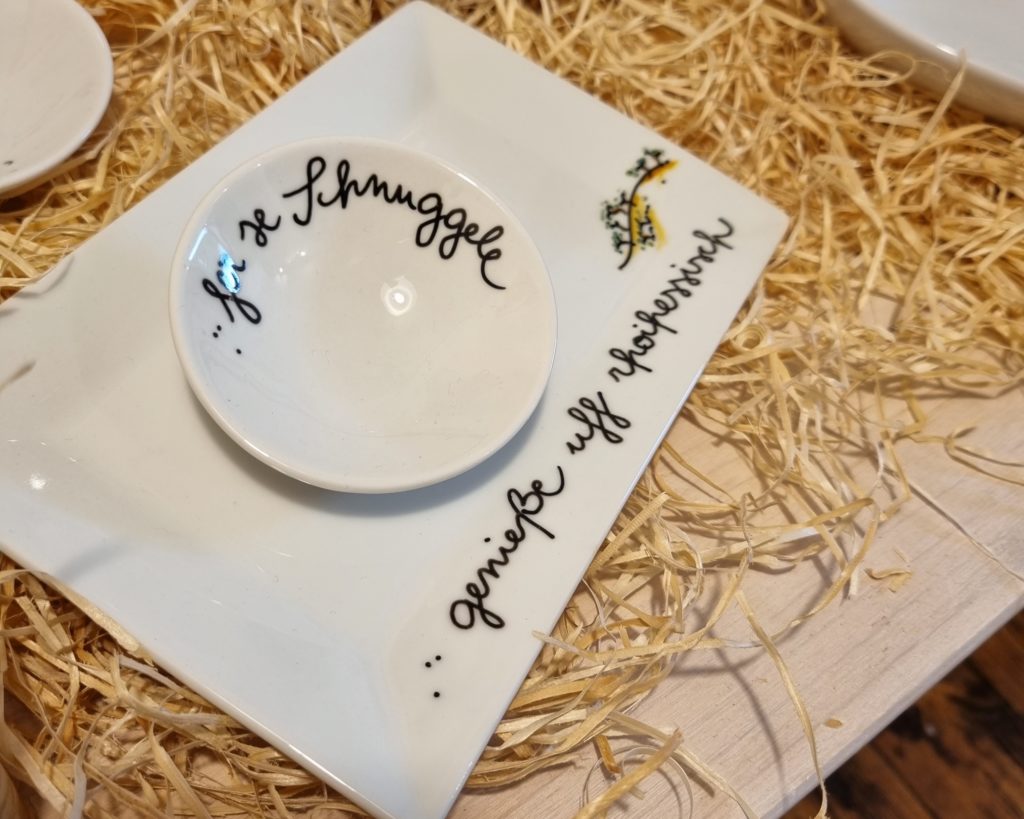
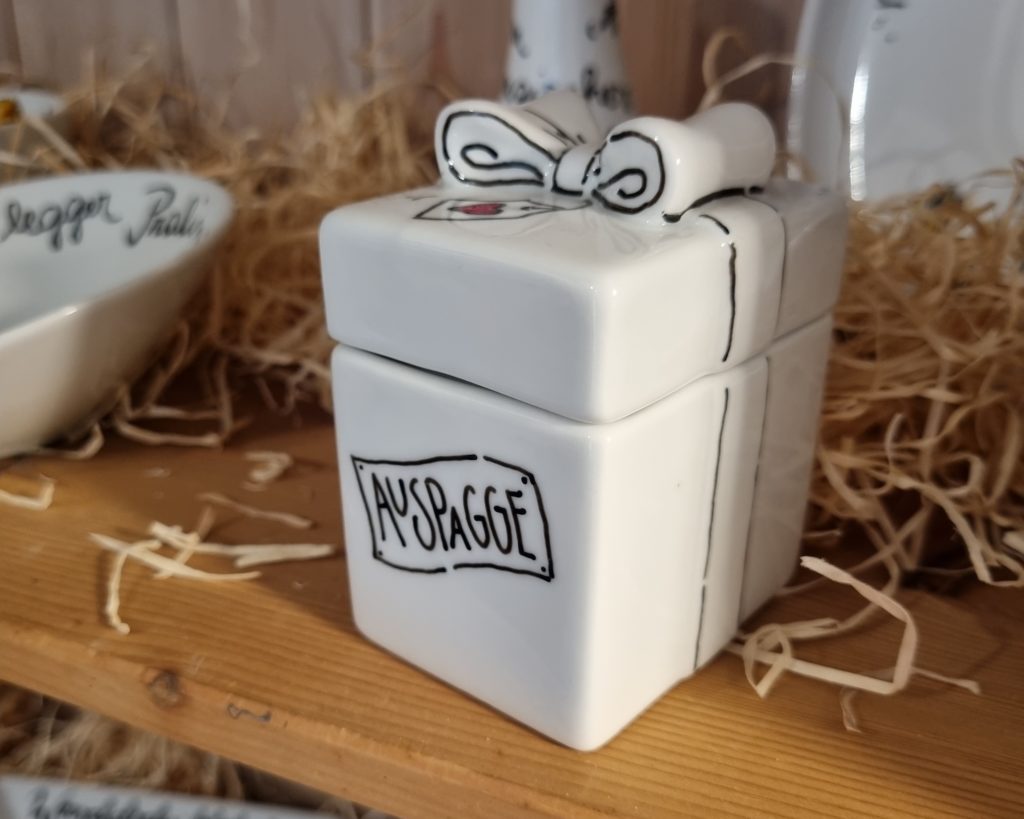
"Above all, my customers appreciate the personal support and the possibility for special designs. That's why the location here in Dalheim is so important," says Anke Faust. The appreciation is mutual: "I'm always happy about special orders! There hasn't been an illustration yet that I've turned down: a whole house for a housewarming, London with all its sights...I can never run out of inspiration that way." It takes the artist about 2-3 days to design a piece of tableware: first the black outline is applied, this is filled with porcelain paint, in between everything has to dry and finally everything can be fired. Those who commission a special production should rather allow for a little more lead time, especially in the pre-Christmas period. Fittingly, the production of Advent tableware will soon begin in the studio. Price-wise, the pieces start at 6€ for small bowls and increase from cups to plates and platters to a two-tiered etagere for 38€. For commissioned work, the price can still vary somewhat depending on the effort involved. Anke Faust sums up: "The most important thing is that my customers enjoy the tableware themselves. Whether as a gift or for their own household, the quality must convince." For this reason, she obtains the tableware from a specialized porcelain dealer in Germany.
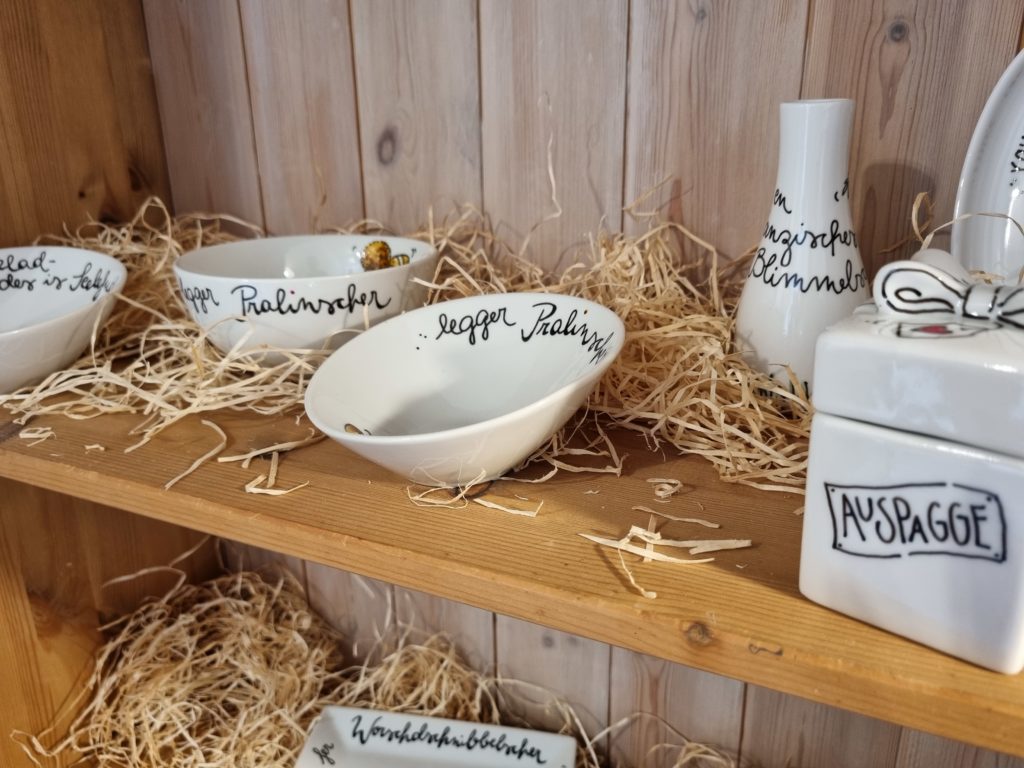
In the region, the "Mundart-Gescherr" is available at the studio in Dalheim, at "BiNO" in Nieder-Olm, at "Perro Negro" in Worms and Eich and at "s'Fachl" in Mainz. More information can be found at any time at https://www.anke-faust.de/mundart-geschirr-und-mehr/

